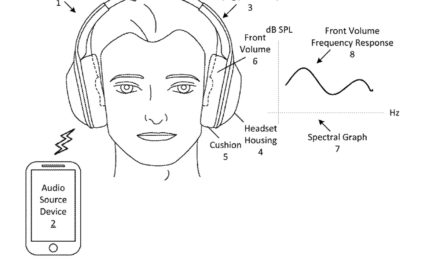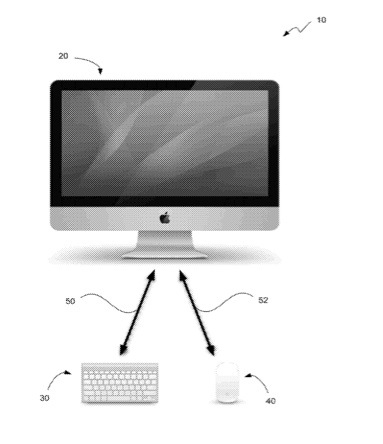By Rick Sutcliffe
The Spy is a little late with his meanderings and prognostications this month. The two weeks of year end meetings and activities lacked an actual graduation ceremony–a great disappointment for students to be sure, who have to wait till November or later for their walk across the stage and handshake–but were replete with lengthy meetings around “how did we do this term?” and “What are we going to do next?”
The consensus on the setting for the latter is as the Spy opined a couple a months ago in this space and privately—COVID-19 and its restrictions will not be over, and even if we resume face-to-face in classrooms to an extent, a second wave of the virus is likely to close that down again sometime between November and February.
This, we intend to be nimble, starting the year off using a multi-modal, multi-access model for our teaching. Stripped of all the financial, educational and philosophical underpinnings, what it means for the Spy’s Discrete Math classes is something like:
– one to three pre-recorded and pre-watched 15-20 minute presentations by yours truly (people get google-eyed in longer presentations);
– a 20-30 minute in-class tutorialish discussion and activity session with as many students who can physically attend and be accommodated with appropriate social distancing plus others participating synchronously by video conferencing;
– this session will be recorded and posted for others to experience asynchronously (after all, some students may be 12 hours different in time);
– and all other course materials, including syllabus, assignments, copies of notes and slides, the quizzes and exams, will all be posted and evaluated online (some of which we have done all along).
This scheme is not pure online–that’s been (over)done. It is multi-access, and if implemented carefully, the university can again (when the second wave hits) pull the switch and return to pure distance learning as we did last semester, and do so at a moment’s notice. Who knows? The projected drop in enrolment may turn out to be the opposite. ‘Course, everyone will have to work their butts off this summer to make this happen, and the discussion on how to offer lab courses has yet to take place.
There ain’t a one-size-fits-all solution to the latter problem, BTW. No two departments and no two courses within a department will be amenable to the same solution. Case in point is the Spy’s seminar course on ethical and social issues in technology, which runs with students doing the majority of the presentations in the form of prepared talks, formal debates, and participating in discussions on pre-assigned questions. Probably impractical to include an asynchronous mode is that one. So far, the Spy can think of as many as half a dozen possibilities for labs–all of which might be used in some course, or even in the same course at different times.
Now returning to that 16-inch MacBook Pro portable that the Spy has been using for the last couple of months. You will recall that he switched from the 15-inch 2015 model because he was anticipating doing some flying to conferences this summer and was worried that over-zealous airlines or airports might not allow that machine aboard, despite that its battery had already between replaced. He did promise a sober review at a later date, so here some of it is.
Externally, the machine is for the most part well-designed and well-built. Industrial design is something Apple has almost always gotten at least mostly right. Two exceptions are the touch bar, for which the Spy has found little use, and the touch button, which he believes should have been located beside the lower part of or incorporated into the trackpad to cut the reach.
To be fair, the Spy’s discomfort is in part because of the way he does most of his work. He usually uses the machine on the desktop with a subsidiary keyboard on a pull-out tray beneath, and at least two supplementary monitors–one above the laptop and the other rotated 90 degrees and situated to their left for displaying documents in full-page format.
But even when in a physical meeting and using the laptop alone, the touch bar and button are too far away, and the word completion choices it is offering while writing this column would be a reach even with the machine in a literal lap, much less when being used on the desktop as is almost always his case in the COVID era.
And the machine, or perhaps macCatalina, has two significant flaws, which may well be related. The first is the tendency to forget during sleep that one or both of the external monitors is out there, and to wake with one of them dark, and no longer part of the virtual desktop. Sometimes closing the lid, putting it back to sleep and then re-opening it will clear the problem, but often the only solution is a re-boot.
The second is a penchant for overheating behind the touch bar and consequent rather noisy fan activity in what should be a quiet machine. Research online revealed this is a widespread problem, with the suggested solution of charging only from the right side, and hanging all peripheral connections on the left. Apparently the 15-inch machines have the same problem. Who’d’a thunk?
The charging port on MacBooks was always on the left. The Spy tried this fix, but has found it only lessens the problem. It does not solve it. He can close the lid and put the box to sleep, but come back hours later to fan noise and find the rear portion of the case too hot to touch. This is definitely not a good sign. Rumour (or speculation) has Apple working on fixing the problem in a later version of Catalina’s power management software, but the Spy wouldn’t hold your breath. (Hard to hold breath anyway, and dangerous in this era.)
The only real solution may be to shut the machine down altogether when not in use–which would save electricity, but reduce convenience. The Spy wonders whether in its attempt to keep power requirements under the FAA flying limit of 100 Watts, Cupertino produced a slightly underpowered machine–or to put it another way, a machine that consumes too much power for its own good.
As far as Catalina itself is concerned, the Spy has neither particular concerns nor particular high praise. Yes there is more interoperability with iOS, but nothing that impacts his own way of working, except for the loss of 32-bit applications. He has not noticed other negatives of any import.
So there you have it–yet another Apple portable with good looks and mostly solid software but plagued with the usual sleep and power issues. You would think after many such episodes, Apple would have been able to solve what has become an embarrassing duo of ongoing problems of the same general types. The Spy’s bottom line on this rig at the moment is a solid “B”, but no higher unless and until these issues are addressed.
Meanwhile, back at the ranch….
Mrs. Spy’s old Power PC Mac Pro finally became too ancient to function in the era of secure browsing certificates and improved email security. She uses it for little other than email, but could no longer browse to embedded links and he wanted to remove the somewhat insecure “POP before SMTP” facility from his server. So the Spy rehabilitated a (free) 2008 Intel MacPro into which he put a Radeon 580 Sapphire Nitro+ graphics card, and onto which he installed Catalina using DosDude’s installer for “unsupported” machines.
This rig has a tendency to “forget” its keyboard and need rebooting, but he is confident he has a workaround to that now (reboot every midnight). Otherwise, it works just great–testament to the fact that Apple abandons old hardware far too soon. There is no practical reason other than the desire to make money on upgrades why Cupertino could not have continued to support all its Intel machines right into the macOS Catalina era and beyond.
Also, because not all software will be 64-bit any time soon (equation editors are a notorious instance) he has decided to keep a machine around on an older OS, and so has repaired a 17-inch 2007 MacBook Pro with new video chips and will install OSX 10.11 on that one for continued access to some older files that cannot be read on Catalina, and sometimes not well on Mojave. He notes, however, that LaTeXit is a pretty decent Catalina-compatible program for creating and manipulating equations–once you get used to writing LateX and a rather unusual interface. He’d like access to more LateX libraries though.
Finally, an old prediction seems about to come true, as persistent rumours have Apple abandoning Intel chips for its own designs sometime in the coming year. Expect to see several years where the OS runs on both, followed by a complete cutting of ties as happened in the switch from PowerPC to Intel–inconvenience all around to fulfill the obvious desire to control more of the technology and supply chain and be less dependent on others’ intellectual property. iSteve would be pleased.
TTFN.
–The Northern Spy
Opinions expressed here are entirely the author’s own, and no endorsement is implied by any community or organization to which he may be attached. Rick Sutcliffe, (a.k.a. The Northern Spy) is professor of Computing Science and Mathematics, Interim Dean of Science, and Chair of the University Senate at Canada’s Trinity Western University. He completed his fiftieth year as a high school and university teacher in 2020. He has been involved as a member of or consultant with the boards of several organizations, and participated in developing industry standards at the national and international level. He is a co-author of the Modula-2 programming language R10 dialect. He is a long time technology author and has written two textbooks and ten alternate history SF novels, one named best ePublished SF novel for 2003. His various columns have appeared in numerous magazines and newspapers (paper and online), since the early 1980s, and he’s a regular speaker at churches, schools, academic meetings, and conferences. He and his wife Joyce celebrated their fiftieth anniversary in 2019 and have lived in the Aldergrove/Bradner area of B.C. since 1972.
URLs for Rick Sutcliffe’s Arjay Enterprises:
The Northern Spy Home Page: http://www.TheNorthernSpy.com
opundo : http://opundo.com
Sheaves Christian Resources : http://sheaves.org
WebNameHost : http://www.WebNameHost.net
WebNameSource : http://www.WebNameSource.net
nameman : http://nameman.net
General URLs for Rick Sutcliffe’s Books:
Author Site: http://www.arjay.ca
Publisher’s Site: http://www.writers-exchange.com/Richard-Sutcliffe.html
The Fourth Civilization–Ethics, Society, and Technology (4th 2003 ed. ): http://www.arjay.bc.ca/EthTech/Text/index.html
Other URLs of relevant interest:
BC Government COVID site: http://www.bccdc.ca/health-info/diseases-conditions/covid-19
TWU COVID Info: https://www.twu.ca/covid-19-information
Aberdeen Baptist lessons and Sermons: https://www.youtube.com/channel/UC4DbcQZJphc1oH7icCUBTJg
URLs for products mentioned:
Apple MacBook Pro: https://www.apple.com/ca/macbook-pro-16/
LaTeXiT: https://www.chachatelier.fr/latexit/
DosDude: http://dosdude1.com





